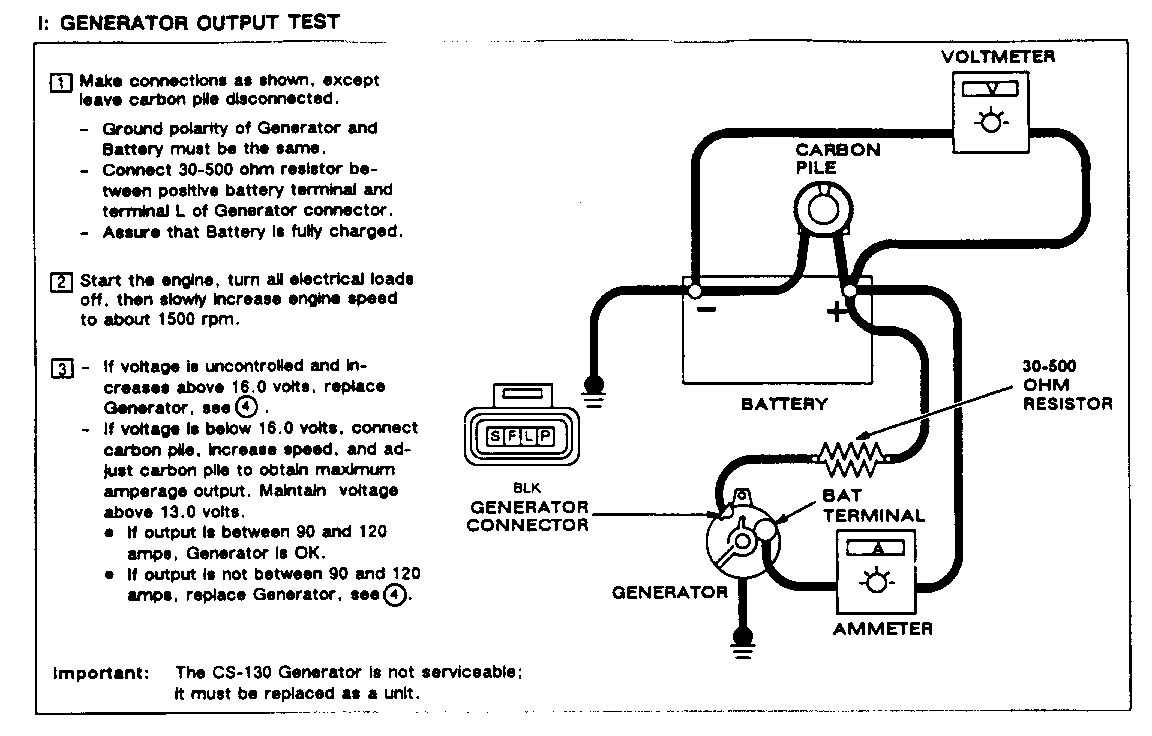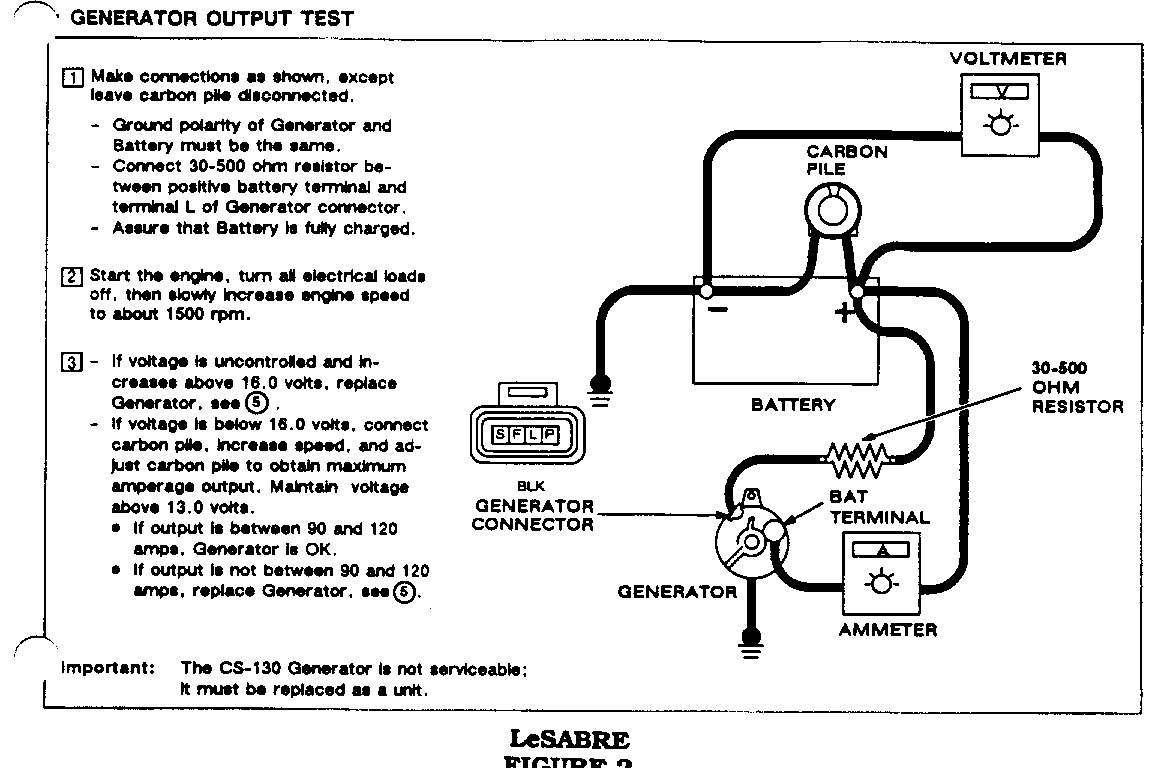ELECT. SYSTEM MANUAL UPDATE GENERATOR OUTPUT TEST

SUBJECT: ELECTRICAL SYSTEMS MANUAL UPDATE - GENERATOR OUTPUT TEST (REVISED CHART)
MODELS AFFECTED: 1991 LESABRE 1991 PARK AVENUE/PARK AVENUE ULTRA
The 1:GENERATOR OUTPUT TEST - LeSabre - page 47, Park Avenue - page 53 has been revised to allow generator output to be checked on the vehicle. The following test procedure should be used for diagnosis.
1: GENERATOR OUTPUT TEST (Figure 1) ----------------------------------------- [1] Make connections as shown, except leave carbon pile disconnected.
- Ground polarity of Generator and Battery must be the same.
- Connect 30-500 ohm resistor between positive battery terminal and terminal L of Generator connector.
- Assure that Battery is fully charged.
[2] Start the engine, turn all electrical loads off, then slowly increase engine speed to about 1500 rpm.
- If voltage is uncontrolled and increases above 16.0 volts, replace Generator, see 4
- If voltage is below 16.0 volts, connect carbon pile, Increase speed, and adjust carbon pile to obtain maximum amperage output. Maintain voltage above 13.0 volts.
o If output is between 90 and 120 amps, Generator is OK.
o If output is not between 90 and 120 amps, replace Generator, see 4.
Important: The CS-130 Generator is not serviceable; it must be replaced as a unit.
1: GENERATOR OUTPUT TEST (Figure 2) --------------------------------------- [1] Make connections as shown, except leave carbon pile disconnected.
- Ground polarity of Generator and Battery must be the same.
- Connect 30-500 ohm resistor between positive battery terminal and terminal L of Generator connector.
- Assure that Battery is fully charged.
[2] Start the engine, turn all electrical loads off, then slowly increase engine speed to about 1500 rpm.
[3] - If voltage is uncontrolled and increases above 16.0 volts, replace Generator, see 5.
- If voltage is below 16.0 volts connect carbon pile, increase speed, and adjust carbon pile to obtain maximum amperage output. Maintain voltage above 13.0 volts.
o If output is between 90 and 120 amps, Generator is OK.
o If output is not between 90 and 120 amps, replace Generator, see 5.
Important: The CS-130 Generator is not serviceable; it must be replaced as a unit.


General Motors bulletins are intended for use by professional technicians, not a "do-it-yourselfer". They are written to inform those technicians of conditions that may occur on some vehicles, or to provide information that could assist in the proper service of a vehicle. Properly trained technicians have the equipment, tools, safety instructions and know-how to do a job properly and safely. If a condition is described, do not assume that the bulletin applies to your vehicle, or that your vehicle will have that condition. See a General Motors dealer servicing your brand of General Motors vehicle for information on whether your vehicle may benefit from the information.
